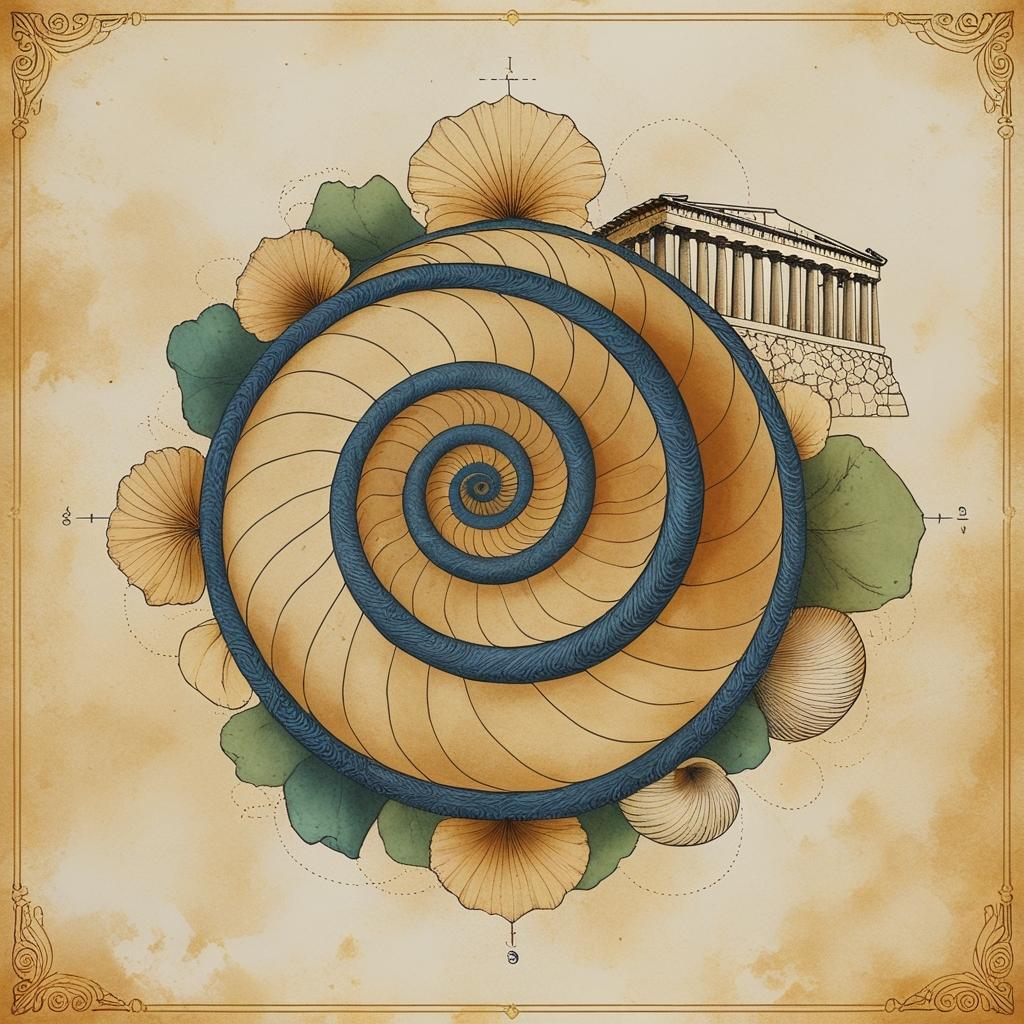The golden ratio, often denoted by the Greek letter phi (ϕ), is one of the most fascinating and mysterious concepts in mathematics. This irrational number, approximately equal to 1.6180339887, has intrigued mathematicians, artists, architects, and scientists for centuries. The golden ratio appears in nature, art, and architecture, where its inherent aesthetic properties have been celebrated as a standard of beauty and harmony. In this essay, we will explore the mathematics behind the golden ratio, its occurrence in nature, and its influence on art and architecture.
The Mathematics of the Golden Ratio
At its core, the golden ratio is defined as the relationship between two quantities. When the ratio of the larger quantity to the smaller one is the same as the ratio of their sum to the larger quantity, they are said to be in the golden ratio. Mathematically, if a and b are two numbers where , they satisfy the equation:
\frac{a}{b} = \frac{a + b}{a} = \phi
This leads to the quadratic equation:
\phi^2 - \phi - 1 = 0
Solving this equation gives the positive value of , approximately 1.618. The golden ratio is an irrational number, meaning its decimal expansion goes on infinitely without repeating.
The Golden Ratio in Nature
One of the most captivating aspects of the golden ratio is its natural occurrence. Many patterns and structures in the natural world adhere to this ratio, giving rise to the idea that nature favors this proportion for its efficiency and aesthetic appeal.
1. Fibonacci Sequence:
The Fibonacci sequence, a series of numbers where each term is the sum of the two preceding ones (e.g., 0, 1, 1, 2, 3, 5, 8, 13, etc.), is closely related to the golden ratio. The ratio of consecutive Fibonacci numbers approaches the golden ratio as the sequence progresses. This relationship can be observed in natural phenomena such as the arrangement of leaves on a stem, the spirals of sunflower seeds, and the pattern of pinecones.
2. Phyllotaxis:
Phyllotaxis refers to the arrangement of leaves, seeds, or flowers in plants. For example, the spirals in a sunflower or the scales of a pinecone often follow the Fibonacci sequence, resulting in patterns that approximate the golden ratio. This arrangement allows plants to maximize sunlight exposure and space efficiency.
3. Human Anatomy and Proportions:
The golden ratio is often associated with the proportions of the human body. The ratio of the length of the forearm to the hand, the division of the face, and even the spacing of facial features are believed to approximate the golden ratio, contributing to perceptions of beauty and symmetry.
The Golden Ratio in Art
Artists have long used the golden ratio to create visually pleasing compositions. The golden ratio provides a sense of balance, harmony, and proportion that is appealing to the human eye.
1. Leonardo da Vinci:
Leonardo da Vinci, one of the most celebrated artists of the Renaissance, is known for incorporating the golden ratio into his works. His famous drawing, Vitruvian Man, demonstrates the application of the golden ratio to human anatomy. Da Vinci also employed this ratio in his paintings, including The Last Supper and Mona Lisa, to achieve balance and aesthetic perfection.
2. The Golden Rectangle:
A golden rectangle, whose sides are in the golden ratio, has been used extensively in art. The composition of many paintings, such as Salvador Dalí's The Sacrament of the Last Supper, is based on the proportions of a golden rectangle. When a square is removed from a golden rectangle, the remaining shape is another smaller golden rectangle, a property that creates a recursive and harmonious visual effect.
3. Modern Art and Design:
The golden ratio continues to influence contemporary art and design. Graphic designers and photographers often use grids based on the golden ratio to compose layouts and create balanced images. This proportion is also used in logo designs, typography, and visual branding to evoke elegance and sophistication.
The Golden Ratio in Architecture
Architects throughout history have used the golden ratio to design buildings and structures that are both functional and visually appealing. The golden ratio is often associated with harmony and symmetry, making it a popular choice for architectural design.
1. The Great Pyramid of Giza:
One of the earliest examples of the golden ratio in architecture is the Great Pyramid of Giza. The ratio of the height of the pyramid to the length of its base is believed to approximate the golden ratio, giving it an aesthetic and geometric significance.
2. Ancient Greek Architecture:
The golden ratio was extensively used in ancient Greek architecture. The Parthenon, a temple dedicated to the goddess Athena, is often cited as a prime example of its application. The proportions of the facade and the spacing of its columns are believed to reflect the golden ratio, creating a sense of balance and grandeur.
3. Modern Architecture:
The golden ratio continues to inspire modern architects. Le Corbusier, a pioneer of modern architecture, developed a system of proportions known as the "Modulor," based on the golden ratio and the human body. His designs, such as the Unité d'Habitation, incorporate these proportions to achieve functional and aesthetic harmony.
The Appeal of the Golden Ratio
The enduring appeal of the golden ratio lies in its universality and intrinsic beauty. It bridges the gap between mathematics and art, science and nature, and the rational and the aesthetic. Its occurrence in the natural world suggests an underlying order to the universe, while its application in human creations demonstrates our innate desire for harmony and proportion.
Conclusion
The golden ratio is a testament to the profound interconnectedness of mathematics, nature, and human creativity. From the spirals of a sunflower to the design of iconic buildings, this magical proportion has left its mark on the world. Its timeless allure continues to inspire artists, architects, and scientists, reminding us that mathematics is not merely a tool for calculation but a gateway to understanding the beauty and order of the universe.

